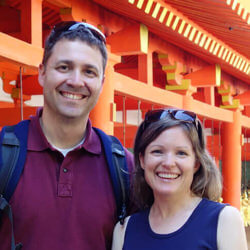Japanese Green Tea: Beginner’s Guide
I love Japanese green tea! I drink it everyday when I’m in Japan.
CONTENTS
Green tea is a delicious drink that has been around for thousands of years. It was first prescribed as a medicine for digestive problems, nervousness, and depression; and later became a drink for pleasure.
The drink originated in China from the Camellia Sinensis plant, which was brought to Japan around 700 years ago. The Camellia Sinensis plant is responsible for all varieties of tea: green tea, black tea, as well as oolong tea. The difference between types of tea is not the plant, but the way the leaves are processed after harvest.
After harvest, tea leaves naturally start to ferment. Leaves intended for black tea are allowed to fully ferment, while leaves for green tea are not given enough time to ferment. They are immediately steamed or pan-fried in order to stop the fermentation process.
Oolong tea leaves are allowed to partially ferment, which puts it in a category of its own.
Caffeine & Antioxidants
The fermentation of the tea leaves contributes to the amount of caffeine and antioxidants in the tea. Green tea ranks lowest in caffeine with nearly half the caffeine of black tea. And, green tea is highest in beneficial catechins, including the widely researched EGCG, and Vitamin C.
Japanese & Chinese Green Tea
Green tea varieties from Japan and China are quite different in taste and color. The difference is in the method of processing.
In Japan, tea leaves are steamed to stop fermentation. In China, tea leaves are pan-fried to stop fermentation. This small difference results in Japanese green tea having a vibrant green color and Chinese green tea a pale yellow color.
Types of Japanese Green Tea
Gyokuro
Gyokuro is the highest quality tea in Japan. Because it is not produced in mass quantities, it is very expensive. Its delicate flavor and bright green color comes from the tea plants being shaded from sunlight before harvest.
Matcha
Matcha was traditionally used in the Japanese tea ceremony. The tea plants are shaded from sunlight the same as Gyokuro and later ground into a fine powder. Because the whole leaf is consumed, Matcha has more beneficial qualities than brewed green tea.
Kabusecha
Tea leaves for Kabusecha are also covered before harvest, but for a shorter period of time than Gyokuro and Matcha. Kabusecha green tea is generally ranked in-between Gyokuro and Sencha.
Sencha
Sencha is the most common tea in Japan. When people talk about green tea, they are usually referring to Sencha. All other types of teas are usually compared to Sencha.
Fukamushi
Fukamushi is a type of Sencha that is steamed two to three times longer than regular Sencha. The longer steaming time gives the tea a darker green color, a slightly sweeter taste, and more bits in the brewed tea.
Kukicha
Kukicha is not made from tea leaves, but from the leftover stems of processed green tea. Kukicha is mostly made from Tencha, the leaves used to make Matcha, but also Gyokuro and Sencha. When brewed, the stems have a mild, less bitter flavor.
Genmaicha
Genmaicha is a mixture of tea leaves and roasted rice. It has a unique aroma and flavor that comes from the rice. High-grade Genmaicha is made from Sencha or Gyokuro tea leaves. There is also Genmaicha with Matcha powder.
Houjicha
Houjicha is a low-caffeine roasted green tea made from mature leaves. Houjicha does not have a green color because it is heavily roasted. It is a pale brown tea with a slightly sweet taste and woody aroma.
How to Brew
To brew Japanese green tea, measure 2 teaspoons of loose leaf green tea and put into a tea pot. Slowly add 1 cup of hot water and let it sit for 30 seconds to 1 minute. Pour into your tea mug and enjoy!
The water temperature is very important! The water should be hot but NOT boiling. The ideal temperature is 160° F. If the water is too hot, then the tea will be very bitter. I use a hot water dispenser that keeps the water at a steady temperature, so I can enjoy the perfect cup of tea every time.
Recommendations
Many of the tea shops in Japan don’t ship to the United States. Whenever I’m in the US and want green tea, I order from Den’s Tea. They have a small local farm in Shizuoka Prefecture. I like the Sencha and the Cold Brew Teabags.
Matcha Source has excellent matcha green tea from Japan and matcha accessories. Click here to save 10% off your first Matcha purchase.
Want a Unique Japan Trip?
Discover Japan planning secrets with our best selling Itinerary Planning Course. Or inquire about our exclusive Small Group Tours.
Disclaimer: There are affiliate links in this article. This means that if you make a purchase after clicking on these links, we may receive a small commission at no extra cost to you. We have no association with the companies or the products reviewed. These are our own opinions of top travel products.


 Shutterstock
Shutterstock

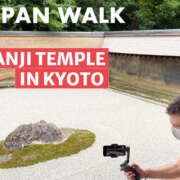 @JAPANandmore
@JAPANandmore  @JAPANandmore
@JAPANandmore 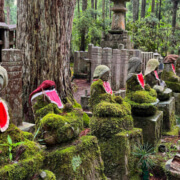 ©JAPANandmore.com
©JAPANandmore.com 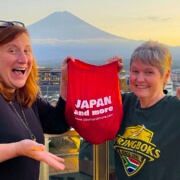 @JAPANandmore
@JAPANandmore  Japanesepod101 Screenshot
Japanesepod101 Screenshot 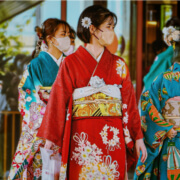
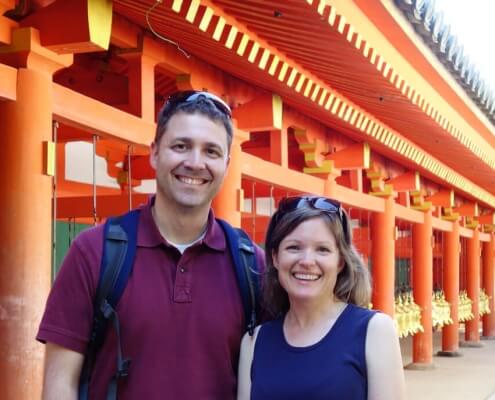




 @JAPANandmore
@JAPANandmore @JAPANandmore
@JAPANandmore